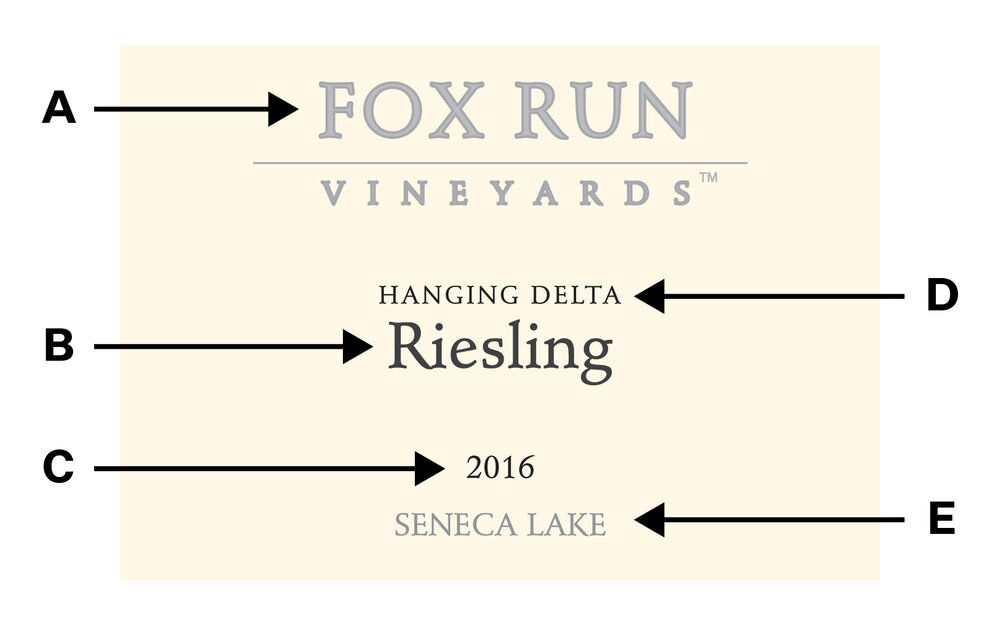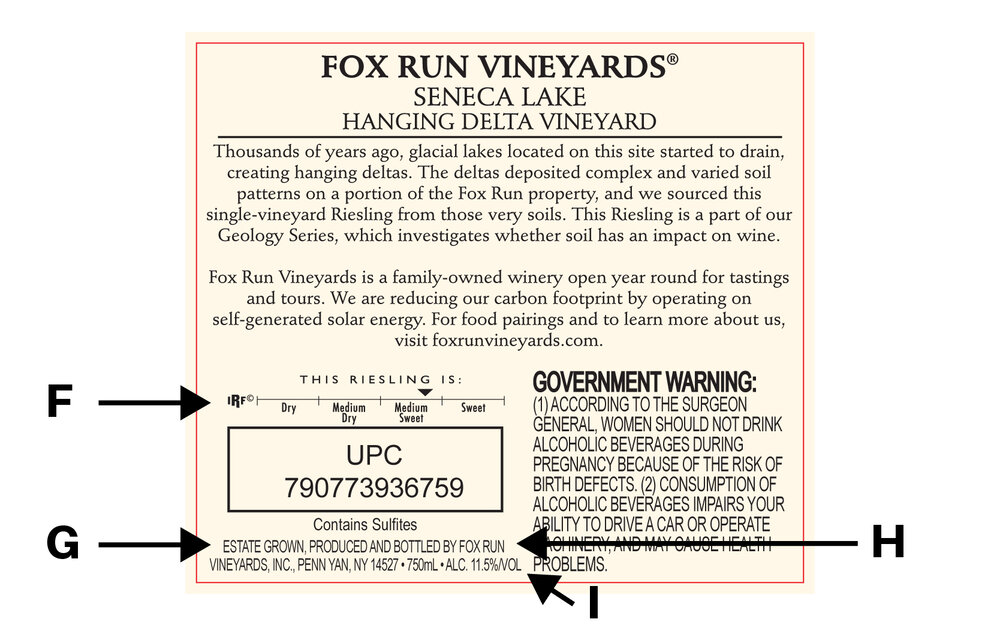According to Wine Vine Analytics, 36% of wine drinkers are confused by the information found on wine labels and 81% desire a label that is clear and easy to read. Wine labels provide useful information to assist consumers when making their wine purchases. Different countries have different labeling standards as to what is required on wine labels. In the United States, wine labels are regulated by the Alcohol and Tobacco Tax and Trade Bureau of the U.S. Treasury Department (TTB). As you become more adventurous with your wine purchases, let us help clear up some of the mystery.

A. Brand Name – This may or may not be the name of the producer of the wine as some wineries produce more than one brand.
B. Varietal/Name of the Wine – If the wine is named for its varietal (grape type), the wine must contain at least 75% of that particular grape and must have the flavor and taste characteristics of the varietal. Some wines are not labelled for their varietals, but rather a unique name chosen by the winery. The exception “Vitis labrusca” grapes such as Concord which require 51%).
C. Year of the Vintage – To be labelled with a vintage, a wine must contain at least 95% of the wine produced from that year’s grape harvest. Wines that do not have a vintage listed, also know as no-vintage (NV) wines, contain more than 5% wine that was produced in previous years.
D. Vineyard Designation – If a winery deems that a specific vineyard produces superior grapes, they may choose to produce a wine with only the grapes of that vineyard making it a single-vineyard designated wine and will name that vineyard on the label. Federal regulations require that wines with a single-vineyard designation contain at least 95% of the grapes from the named vineyard.
E. Viticultural Area – The geographic location of where the grapes were produced is known as the viticultural area or AVA (short for American viticultural area). According to the Alcohol and Tobacco Tax and Trade Bureau or TTB, an AVA is a delimited grape-growing region with specific geographic or climatic features that distinguish it from the surrounding regions and affect how grapes are grown. New York is home to 11 AVAs in total (Cayuga Lake, Champlain Valley of New York, Finger Lakes, Hudson River Region, Lake Erie, Long Island, Niagara Escarpment, North Fork of Long Island, Seneca Lake, The Hamptons, and Upper Hudson).

F. Taste Scale – Originally created by the International Riesling Foundation (IRF) to help consumers decipher between different styles of Riesling, the taste scale is being used by a number of New York wineries to help consumers determine the level of sweetness in a wine as they are choosing wines to purchase. According to guidelines from the IRF, winemakers can calculate the interaction of the sugar, acid and pH in a wine to determine where to place the arrow on the scale indicating that a wine is dry, semi-dry, semi-sweet, or sweet.
G. Estate Grown – Many wineries produce wine not only from their own grapes, but from grapes grown by other wineries or growers. TTB rules require that to be labeled estate grown, 100% of the wine came from grapes grown on land owned or controlled by the winery, which must be located in a viticultural area.
H. Produced & Bottled By – Indicates that the designated winery exercised 100% control from vineyard to bottling.
I. Alcohol Content (ABV) – A statement of alcohol content in percent by volume appears on most labels. Although most wineries in New York choose to list the specific ABV, the TTB does allow for wines that fall within the range of 7 – 14% to have a designation of table wine or light wine listed on the label.
